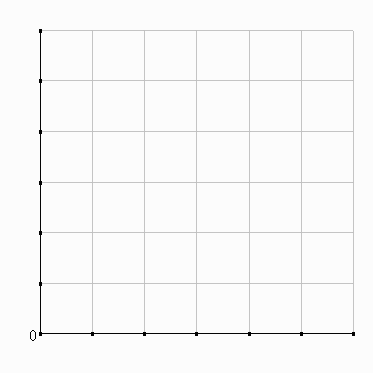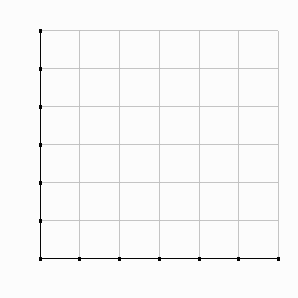 |
 |
| Industry | Firm |
|
Friday, March 22, 2013 |
IV. The perfectly competitive (PC) market (finish)
B. equilibrium in the long run
Profits > 0 => entry until
profits = 0 again
Profits < 0 =>exit until profits = 0 again
Example
(worksheet): coffee after WWII
(assume stable ATC => constant cost industry)
1. D1: 1945: equilibrium w/ European market closed off since 1941 (40%
of market)
2. D2: 1950: Brazil out of stocks demand stable after (eI =
0)
3. S2: 1955-1970s: 4-5 years to get first crop, yields rise 'til tree
is 10-15 years old =>
overplanting (e = 0.3 => foreign exchange
falls)
4. S3: 1970s: Brazilian frost brought market into line
 |
 |
| Industry | Firm |
Key simplification here: ATC remained the same as
industry output changed.
Not always true.
Note: there are only 4 possible situations at MR=MC:
(1) P>ATC => positive economic profits => operate at P=MC
(2) P=ATC => breakeven situation => operate at P=MC
(3) P<ATC, but >=AVC => operate at P=MC for now since you're
covering TVC and part of TFC (ex: dot.com firms)
(4) P<AVC => shut down => losses = TFC; you're making your
situation worse by operating since TR doesn't even cover TVC. Exit unless you expect
things to improve.
Rule: if you choose to be an industry, as long as P>minAVC, operate where P=MC for maximum profits
Industry supply in the short run:
 |
 |
Industry supply (S) =horizontal summation of
individual firms' supply curves (MC curves above minAVC).
That's why we say that marginal costs underlie supply curves.
Effects of entry
due to profits>0 (the reasoning works in reverse for exit):
(1) P falls: always true
(2) ATC curves shift if industry size affects input prices.
(No single firm affects input prices. But all firms
together might)
Possible impact of entry on unit costs--3 possibilities:
| ATC... | Industry label | Example | |
| 1. | Stays the same | Constant cost industry | Haircuts |
| 2. | Rises | Increasing cost industry | Farming |
| 3. | Falls | Deceasing cost industry | Consumer electronics |
 |
 |
| Industry | Firm |
Why does this matter? It determines whether industry prices remain stable, rise or fall as industry size changes over time
V. General equilibrium with competitive markets
We've looked at consumers and how they allocate their
budgets.
We've looked at producers and how they choose their inputs to cut
costs.
We've looked at competitive firms and how they choose how much to
produce.
Now time to put the pieces together
Keep in mind the importance of comparing.
Because of scarcity, we never have as much as we want. We must always
value what we've got relative to what else we might have.
An economist's most common response to a question: "Compared to what?"
This is microeconomics at its most elegant
Economic efficiency
The goal we have the most to say about
First, what is economic efficiency?
Layperson: no waste.
An allocation of goods or resources
is
efficient when it is...
"Pareto optimal" => it is impossible to make anyone
better off without making someone else worse off.
| An economy's 3 efficiency conditions: | |||
| (1) | What to produce? | Output efficiency (OE) | |
| (2) | How to produce? | Input efficiency (IE) | |
| (3) | For whom to produce? | Exchange efficiency (EE) | |
We'll address the efficiency questions in a general equilibrium context.
Recall what that means: Partial equilibrium analysis
looks at one market at a time, using S&D, measuring welfare with CS and PS.
Ex: sugar-free soda.
Limitations of partial equilibrium (S&D) analysis:
(1) What if the sugar-free market equilibrium we see is
because of a tax on sugared sodas?
We can't see that distortion with partial equilibrium
analysis of the sugar-free soda market
(2) Also, partial equilibrium shows only output. Doesn't get behind S&D. How do we know that minimum costs have been achieved?
Recall: General equilibrium analysis
considers the relationship between markets.
>1 market at a time--most broadly, for all markets
together
Here, we'll move to a 2x2x2 market. 2 goods; 2 inputs, 2 consumers
3 key relationships
One from each part of course so far: X-game videos (X) and Yogurt (Y)
Utility maximizing by consumers -->
U-max:
(1) MUx/MUy = MRS = Px/Py
Relative value of X = relative cost of X
Addresses for whom to produce.
Cost minimizing by firms -->
Cost-min:
(2) MPL/MPK = MRTS = PL/PK
Relative productivity of L = relative cost of L
Addresses how to produce
Profit maximizing by firms under perfect competition
-->
p-max
w/PC:
Px=MCx
and Py=MCy =>
(3) Px/Py = MCx/MCy
Relative price of X = relative cost of X.
Addresses what to produce
A. Exchange efficiency (EE)
 |
 |
| Urban water market | Water market for farmers |
What incentives does this situation create?
Could efficiency improve if free market transactions were allowed?
This is a partial equilibrium illustration of what exchange efficiency is about.
Our goal now is to view situations like this in a general equilibrium framework that allows us to see the interconnectedness of markets.
Learning objectives: Diagram an Edgeworth box for exchange, and use it to illustrate alternative allocations. Define and illustrate key concepts related to exchange efficiency, including endowment, lens, contract curve, Pareto superior and Pareto optimal. Explain how competitive markets tend to ensure exchange efficiency.